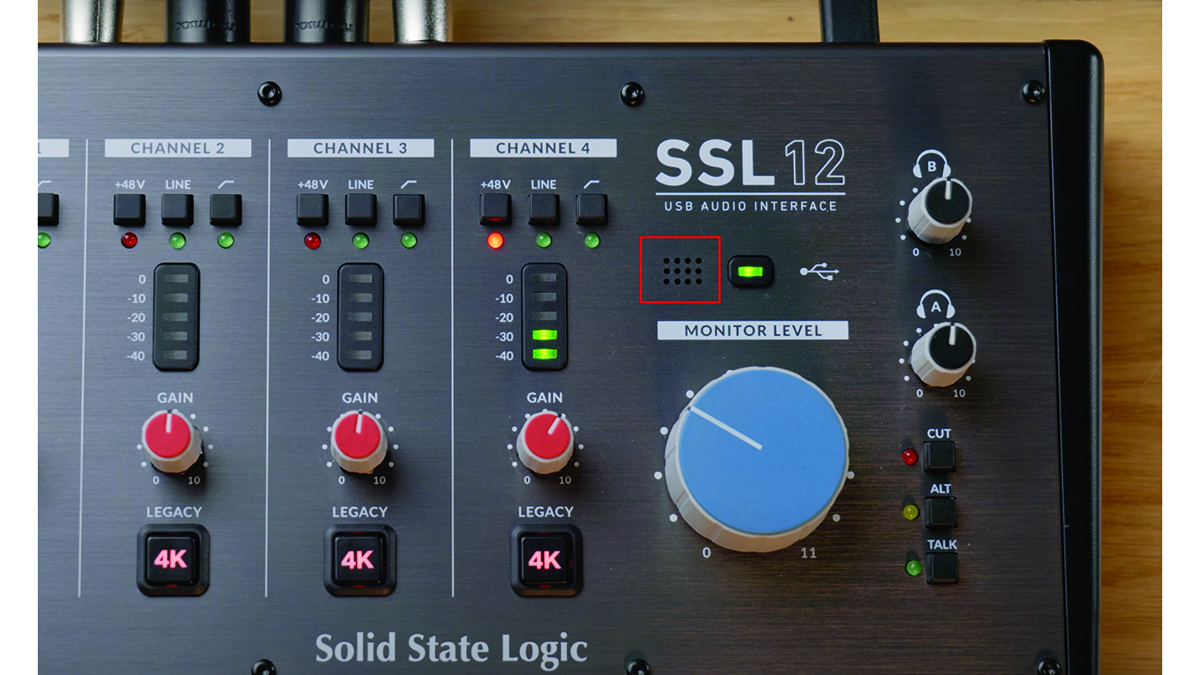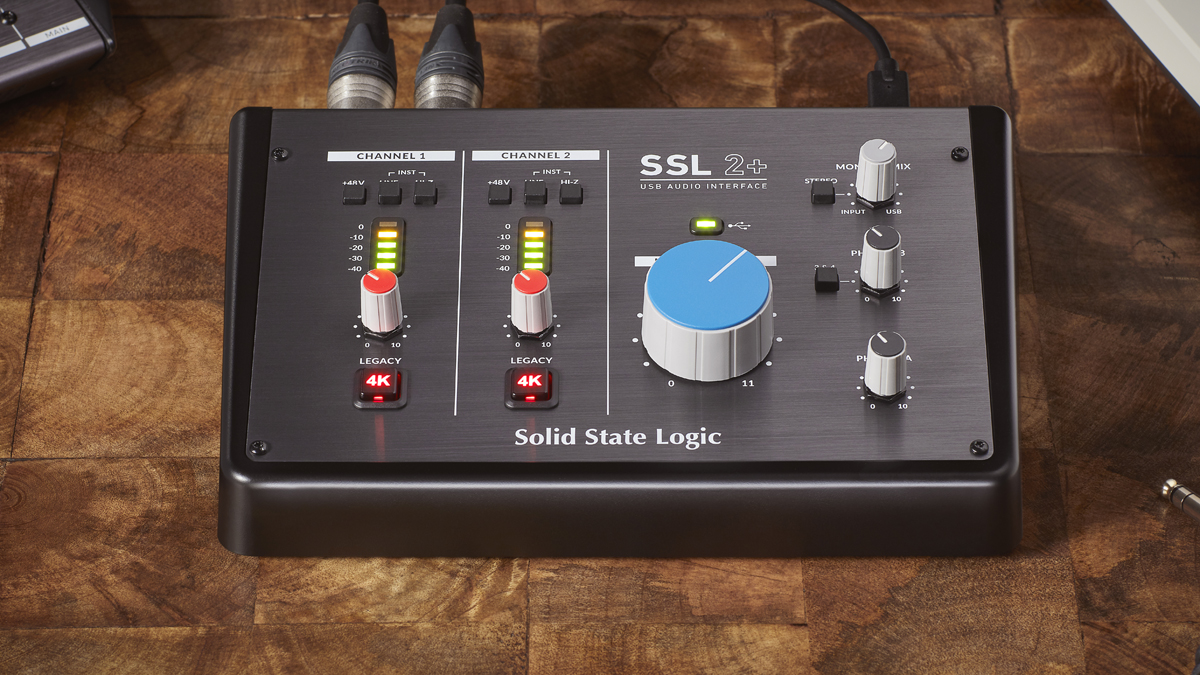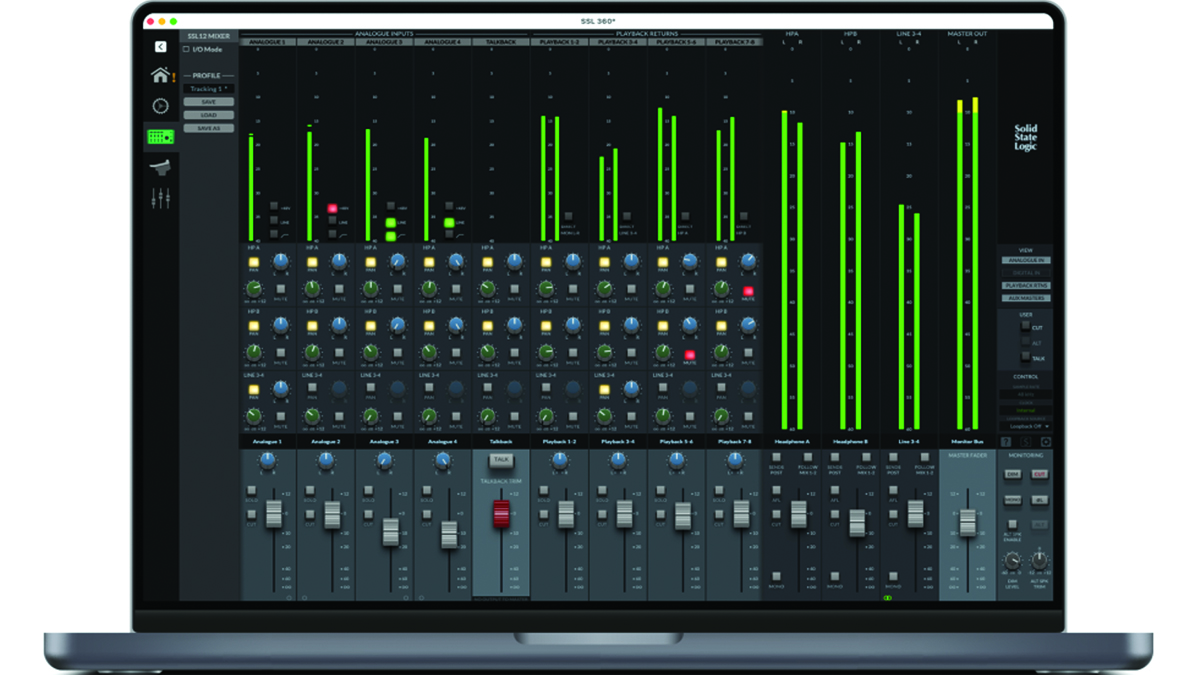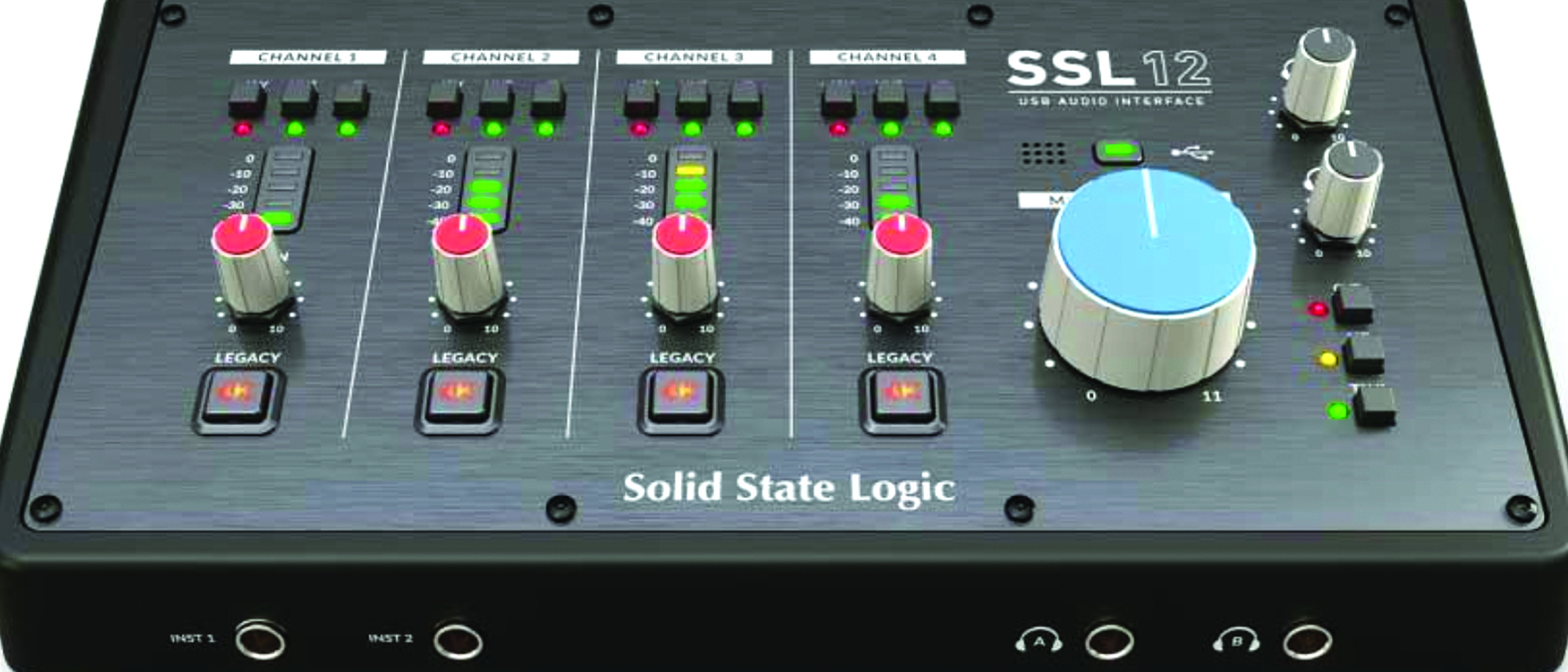MusicRadar Verdict
SSL 12 builds on the entry-level 2 and 2+ interfaces to be a great option for a wide range of studio tasks. It sounds great, is hugely flexible and very easy to use too.
Pros
- +
Fantastic-sounding interface.
- +
Lots of routing options.
- +
And easy to manage them via SSL 360°.
- +
The 4K option is subtle but useful.
Cons
- -
Slightly confusing connectivity spec.
MusicRadar's got your back
Solid State Logic SSL 12: What is it?
Can it really be three years since we looked at SSL’s first forays into the budget audio interface market with the SSL 2 and SSL 2+? And what interfaces they were and still are. It was, for one thing, somewhat surreal to read the SSL name – still the epitome of unobtainable studio cool for many of us – on a product that cost a mere £180.
The SSL 12 is the bigger new relation to those entry-level interfaces, featuring extra connectivity but still the option to inject some classic SSL character into your recordings. Before we get to that extra connectivity, let’s recap on that ‘classic’ angle.
Big brother
The SSL 4000 series consoles were used throughout the ’80s and ’90s on classic recordings by Peter Gabriel, Def Leppard and many more. The 12 and older 2 and 2+ interfaces all feature a 4K switch to inject analogue flavour, inspired by the SSL 4000 console.
Obviously, you’re not getting the entire 4K experience – for that, you’ll need to spend a fortune on the hardware – but you are getting subtle harmonic distortion and a boost at higher frequencies. It’s similar (but not identical) to the Air effect you can employ with Focusrite interfaces.
On top of this, you do get a lot more for a price barely more than double that of the 2+ interface. SSL 12 is obviously bigger, but still reasonably compact. It’s solidly built, with a retro design inspired by SSL’s historic gear.

Solid State Logic SSL 12: Performance and verdict
Connectivity-wise, SSL 12 is a 12-in/8-out interface, with four XLR combo mic/line inputs around the back, with high gain ‘SSL-designed’ mic preamps (including +48v option for using condenser or some ribbon mics).

• SSL 2 & 2+
These get you more basic connectivity and software control but you still get that 4K sound.
• Audient iD44
Similar layout and feature to the 12 but a tad more ADAT connectivity for the extra cost.
Two inputs can be poached for recording hi-Z instruments like guitars, bass or vintage instruments and these are around the front of the unit. The outputs come by way of four dedicated balanced outputs and two sets of headphone outs.
Want all the hottest music and gear news, reviews, deals, features and more, direct to your inbox? Sign up here.
If you’re wondering where the extra eight inputs are, that comes by way of an ADAT input so SSL 12 should partner up with expanders like the Audient SP8.
Just to throw in a slightly confusing input fact, there’s an additional talkback microphone input that can be routed to the headphone or outputs 3 and 4, so technically adds two more inputs.
A loopback feature also allows audio to be routed back into the device – useful for streaming other broadcasts or mixes, for example. If we’re splitting hairs, this adds a couple more inputs.
All of these extras are dealt with via the 360° software (more next) that comes with 12. You also get the SSL Production Pack software bundle with quality titles from Ableton, NI and more plus a three-month SSL Complete subscription.

SSL 360° is the key
Another extra that you get with SSL 12 over those smaller 2 and 2+ interfaces is the SSL 360° software. Many interfaces come with their own control software to access extra routing features all from your desktop. SSL 360° seems to do more, simply because 12 has lots of hidden extras.
You can, for example, create four independent mixes and route them differently. There’s an option to change the headphone outputs to low or high sensitivity, depending on which ’phones you’re using. That audio loopback feature we talk about in the main review is dealt with deftly, as is the talkback function.
It’s even possible to change what the Cut, Alt and Talkback buttons do on the top surface of the unit. Customise them to select Mono Sum or Invert Phase options, for example. So unlike some interface control apps, this one is essential for use with SSL 12, does the job very well and is easy to use considering the number of options you have.
Getting the sheen
The sound of 12 is, as you might expect, crystal clear and with very low noise. The 4K effect is very subtle – something we recall from reviewing the 2 and 2+ but you can detect it more with vocals and acoustic guitar, where it very gently lifts the mix. It’s not going to turn a duff mix into an ’80s classic, but will add a nice sheen to your input recordings.
All in all, 12 is a robust, feature-packed and great value interface that will slot nicely into a variety of recording situations.
As well as the extra connectivity over its smaller siblings, the SSL 360° software is a dream addition that really takes advantage of those extras, making them easy to implement.
If you’re upgrading from a smaller 2-input interface, 12 gives you double that, for not much cash, with the option to upgrade via ADAT later.
With the 4K sonic glitter and all of those routing extras, it could be an interface that tackles most of what you throw at it with ease, for years to come.
MusicRadar verdict: SSL 12 builds on the entry-level 2 and 2+ interfaces to be a great option for a wide range of studio tasks. It sounds great, is hugely flexible and very easy to use too.
Solid State Logic SSL 12: The web says
"A beautifully thought‑out bus‑powered desktop interface with lots of neat little features that lift it above the herd."
Sound On Sound
Solid State Logic SSL 12: Hands-on demos
SSLvideos
Sweetwater
Front End Audio
Doug Jenkins
Solid State Logic SSL 12: Specifications
- Mac OS 10.15 or later | Class-Compliant, Plug-and-play.
- Windows 10, Windows 11 | Install included ASIO/WDM driver.
- CONTACT: Solid State Logic
Andy has been writing about music production and technology for 30 years having started out on Music Technology magazine back in 1992. He has edited the magazines Future Music, Keyboard Review, MusicTech and Computer Music, which he helped launch back in 1998. He owns way too many synthesizers.

